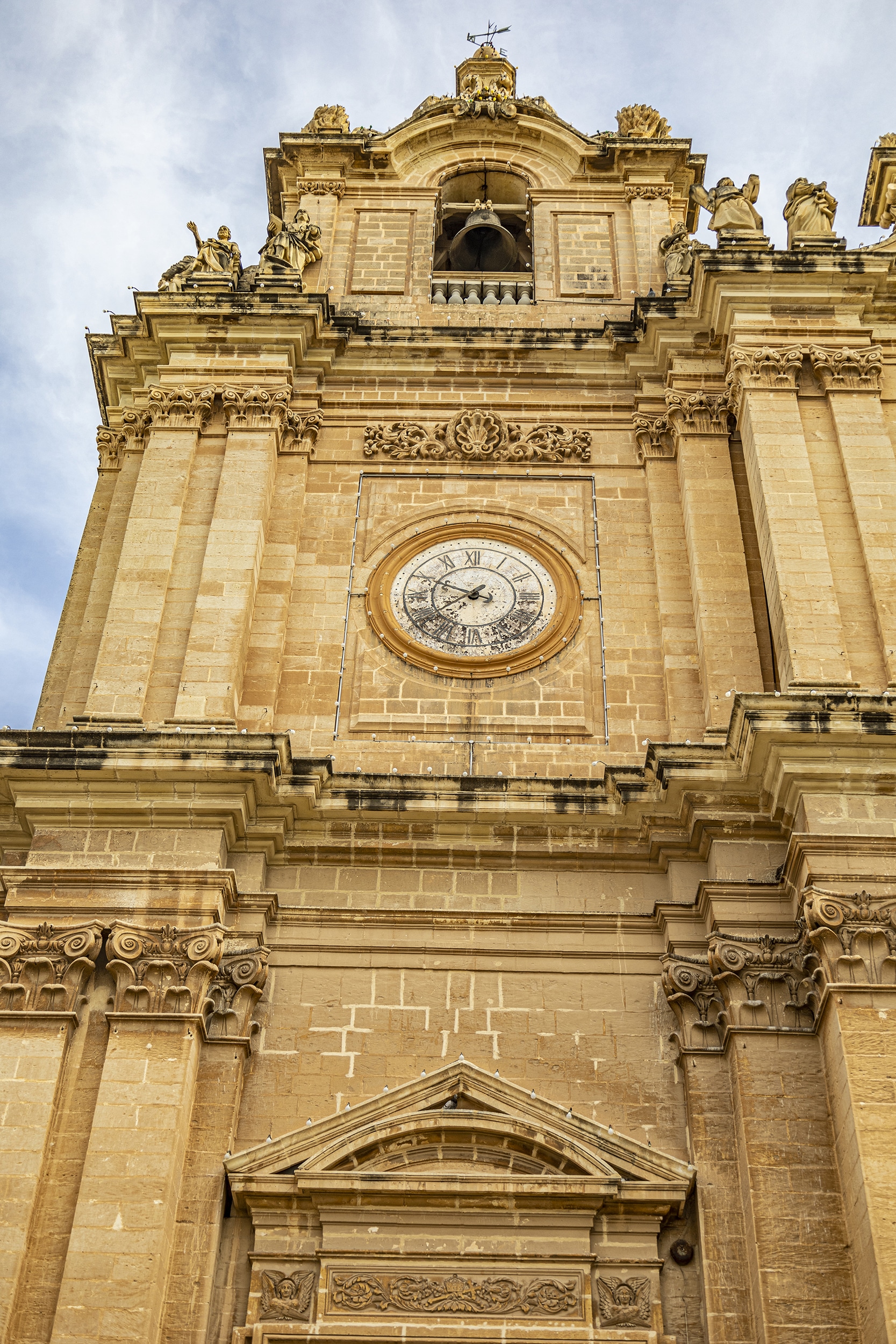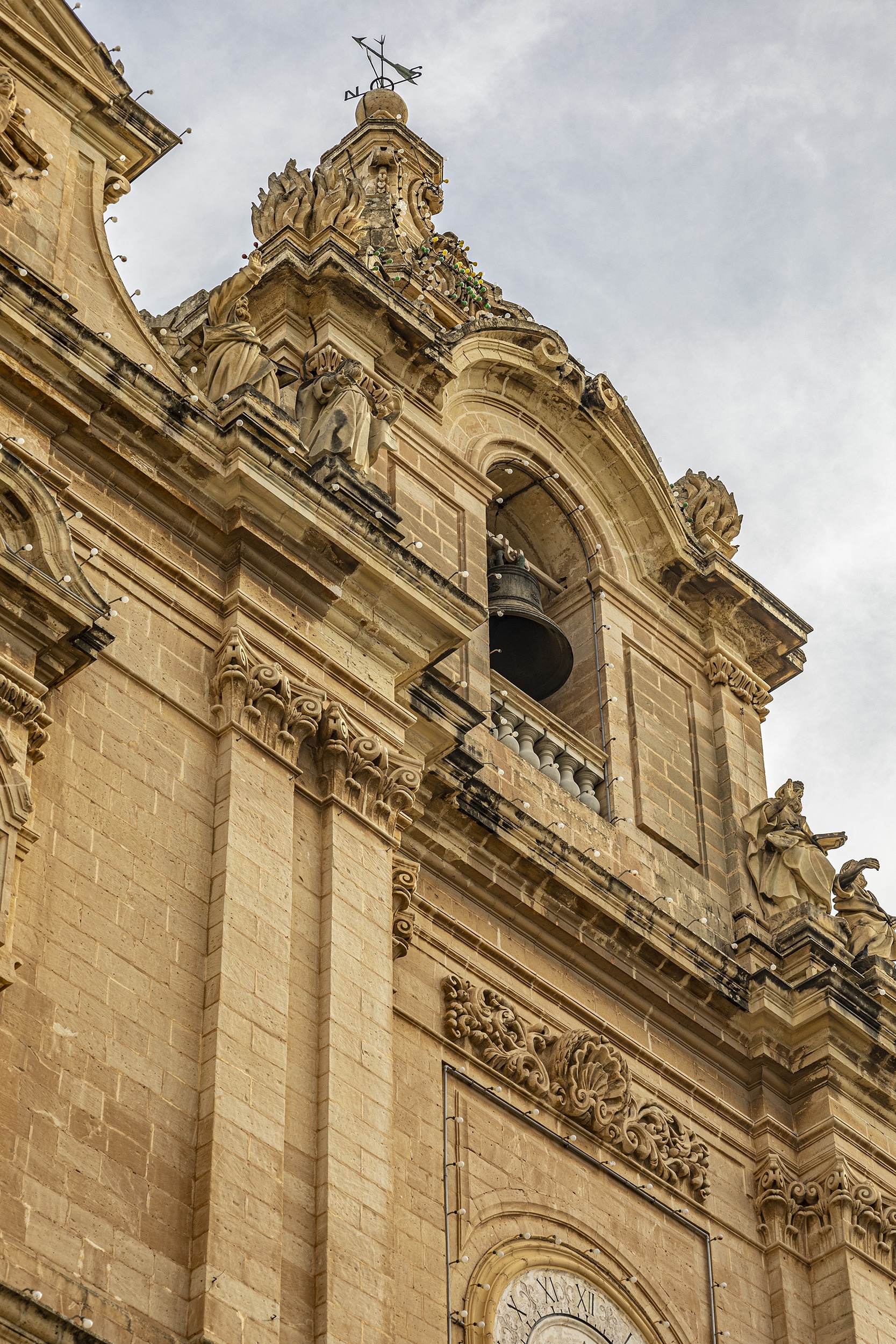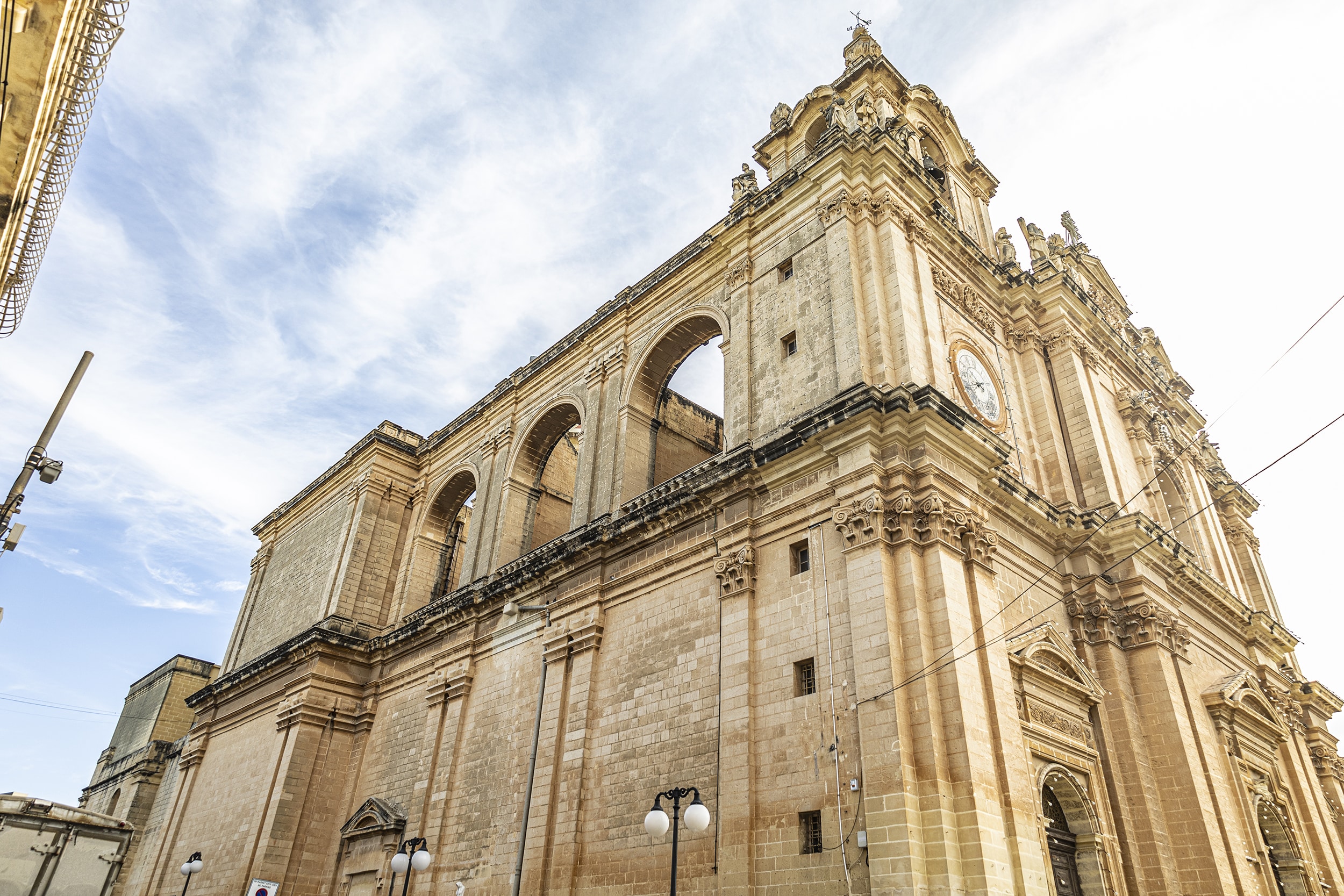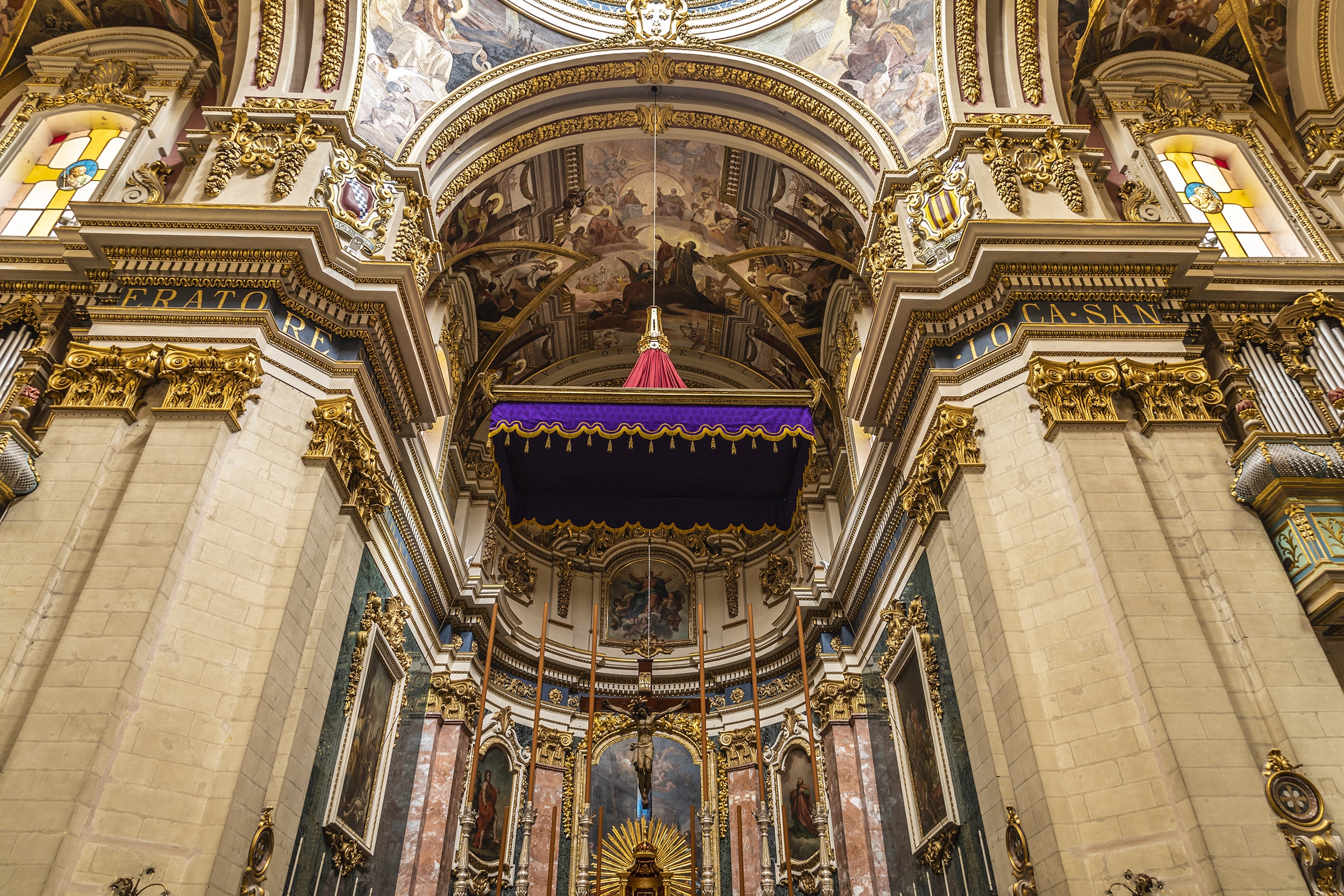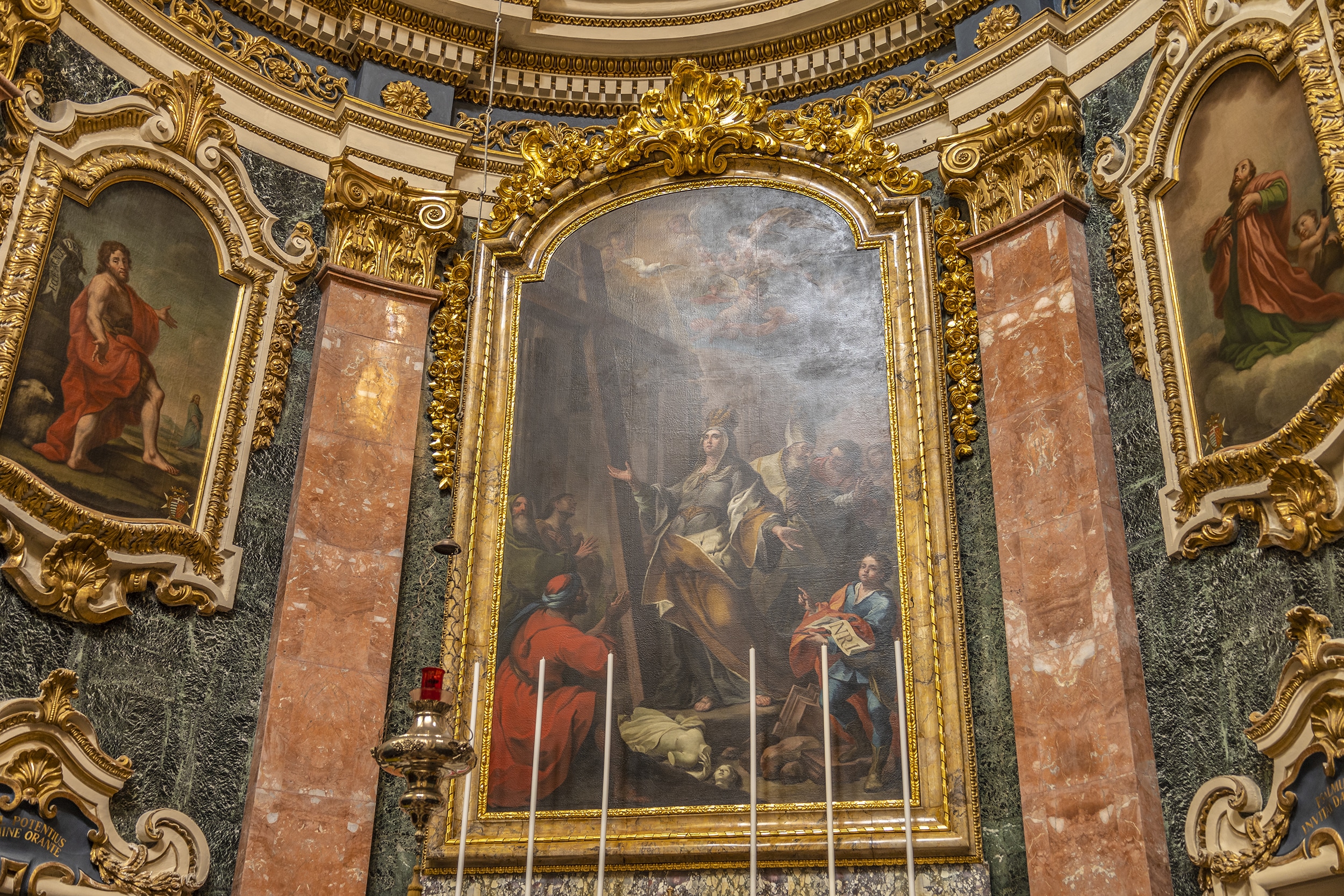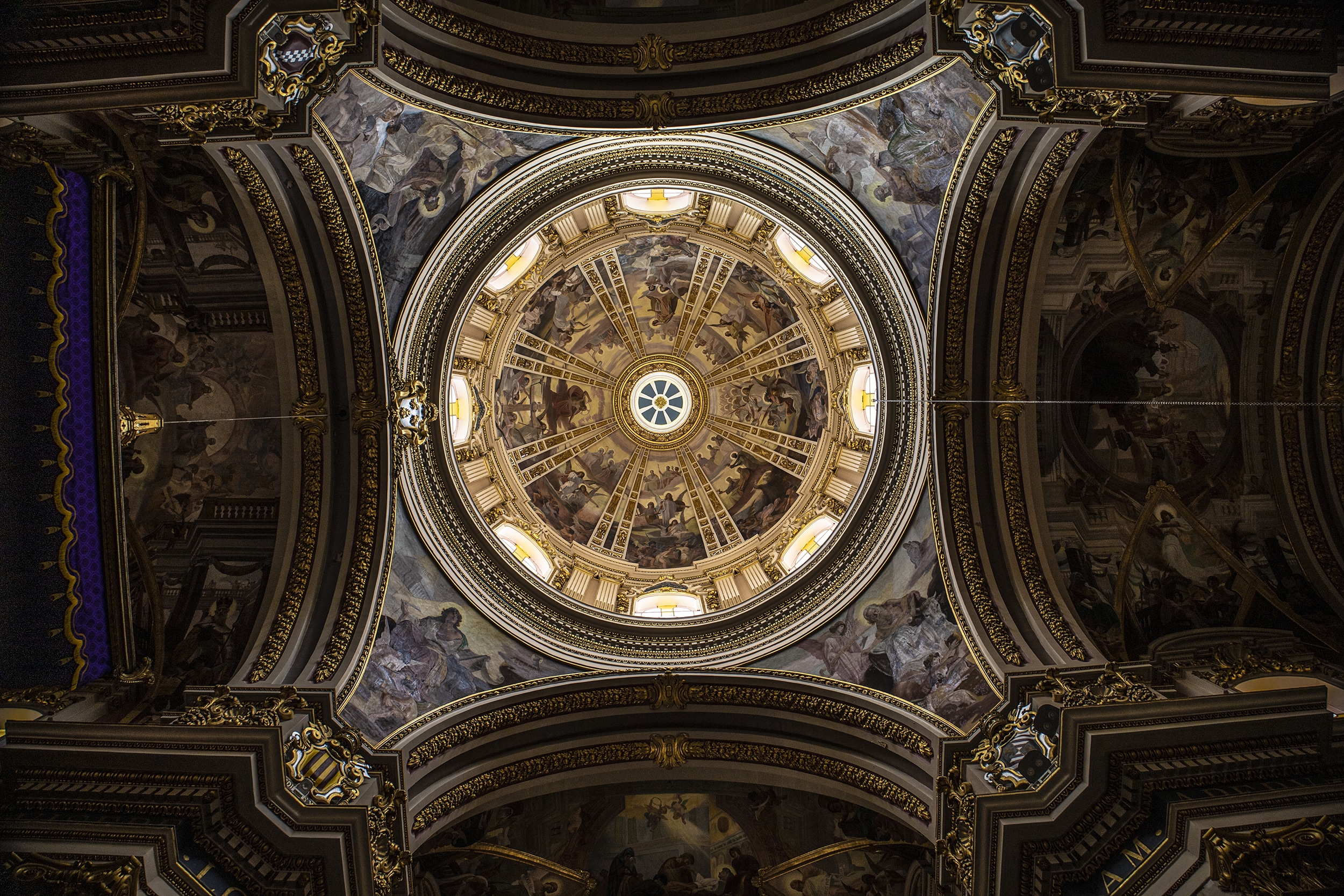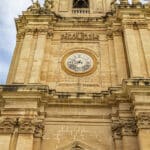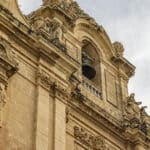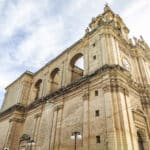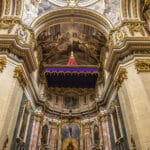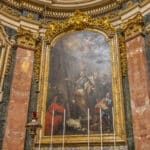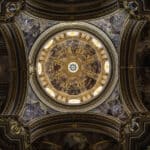Parish Church of St Helen
The Parish church of St Helen in Birkirkara is built in a location where a church dedicated to the Annunciation already stood - parts of the walls of this old church can still be seen close to the niche of St Helen in the chapel of Our Lady of Sorrows. Finding a new site was difficult since by the eighteenth century, Birkirkara was already occupied by several dwellings. As the new church needed a large plot, several houses and gardens also had to be bought and demolished.
Historic Detail
The Baroque church has been attributed to more than one Maltese architect. Salvu Borg (1662-1733), Giovanni Domenico Cachia (c.1690-1761) and Don Nicola Borg have all been named, as this church seems to be the result of a combined effort. The involvement of the latter may have been in the selection of the plan for the new church, to be the same as that of St Paul’s Cathedral in Mdina. Don Nikola Borg may have assumed direction of works after Salvu Borg’s death in 1733.
This church has a majestic façade which follows that of the Mdina Cathedral designed by the Maltese architect Lorenzo Gafà. The church is built on the plan of a Latin cross and comprises the central nave, two transepts, and two sacristies. The side-chapels and transepts each have a small dome. It also includes a crypt beneath the high altar.
A large parvis extends in front of the church. The central axis of the church is made to project more boldly than the lateral parts. This accentuation is further emphasised by the main portal, which is built higher than the side doors, although it is similarly decorated. A second entablature caps the facade on which two bell-towers are superimposed, a feature which is commonly seen in this type of church. The two towers are ornately adorned with sculptural spires, while statues are seen on the rooftop. The magnificent dome rises on a high hexagonal drum adorned by double pilasters at each of its corner. Elegantly elongated windows were added between each pilaster. The low dome springs from the cornice above the pilasters.
Sub-project:
The Triumph of the Holy Cross is the theme of the fresco painting adorning the cupola of the church. Like the sections of the dome, the painting is divided in eight sections. Between 1906 and 1907, the cupola painting was executed by the Italian artist Virgilio Monti (1852-1940), in the calm style of the nineteenth century Nazarene movement.
St Helen, the mother of Emperor Constantine I, is believed to have discovered the True Cross, a quest that led her to travel to Jerusalem in the 4th century. The painting spans the entire dome in eight sections, the central one portraying St Helen and the Holy Cross beneath Christ in Judgment. The three sections to the left of Christ show the despair of souls condemned to hell, depicted by means of writhing figures against a dark background. One section portrays souls in purgatory, as they await their judgement. The three sections to the right of Christ are calmer in tone, showing the triumph of good souls surrounded by angels in heaven.
The Last Judgment is set against a twilight sky of gentle colours, conveying a divine mood in the upper parts, while the lower part is assigned to earthly spaces, defined by architectural features.
Highlight:
The church belltowers are the best part of the architecture which kept the belfries with the same width as that of the lateral bays. The church’s belltowers are equipped with seven bells. The two largest bells were added in 1814. Two other bells were made in 1891 by Guze’ Grech and the other by Giulio Cauchi in 1901. The largest bell, named ‘Helena’ was made in 1931 by Prospero Barigozzi Ltd in Milan, Italy.
Titular Painting:
The titular painting of St Helen with the Holy Cross was executed in 1763 by the Maltese artist Francesco Zahra (1710-1773). The devotion to the saint is an old one, with her feast being celebrated in the Parish of Birkirkara long before the new Parish church was built in the seventeenth century.
The painting portrays St Helen on a pilgrimage to the Holy Land, where she discovers the True Cross. She wears a crown and majestic robes, as she gestures to the True Cross on which Christ was crucified. To the right is a kneeling page holding the nails of the Crucifixion and a cartouche inscribed INRI, the inscription placed over Christ’s head during his Crucifixion. At the foot of the cross a fallen statue in fragments, symbolizes the end of paganism, while bishop Macarius stands behind the saint, symbolizing the spread of Christianity.
In the background is the church of the Holy Sepulchre, built at the request of St Helen. The scene is lit by the divine light of the holy image of the Dove of the Holy Spirit and angels in the upper half of the altar painting.
The monumental frame is in gilt wood with a marble-like painted surface.
Project Information:
The European Union co-funded project, focussed on the conservation actions required to ensure the long-term preservation of the fresco paintings. The interventions sought to reverse and mitigate deterioration and damage sustained to the pictorial layers and to address the underlying causes for detachment. The conservation actions are ensuring the long-term protection and enjoyment of this artistic heritage lying in the heart of the community.
Visitors Opening Hours:
Refer to parrocci.knisja.mt/parrocca for full details.
How to arrive:
Refer to Malta Public Transport website: www.publictransport.mt

